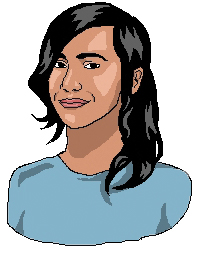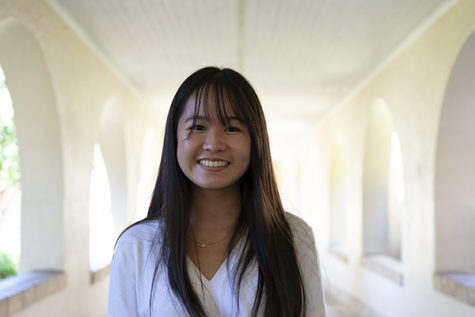Girls, Girls, Girls!
Intersectional feminism is a movement that is frequently mentioned in the media, but what does it mean? Paly’s intersectional feminism club gives us some insight into what this branch of feminism entails.

Since President Trump’s election last year, many women have opened up and told their personal stories regarding sexism and harassment. This has given strength to women across the globe, and the power to come forward and stand up for what they believe in. Movements such as #MeToo and the Women’s March all support women on their journey to equality. Feminists everywhere advocate for various ideologies through social movements to establish social and economic equality of the sexes. The rise of feminism has united women of all races and backgrounds giving birth to a new term: intersectional feminism.
Intersectional feminism contradicts the “trendy” white-feminism that is present in the media. It aims to include all women regardless of their race, sexuality and economic status, in an effort to ensure rights to all women. To gain a better understanding of what the term truly means, we interviewed members of the Intersectional Feminism Club here at Paly. The club consists of meetings in which members discuss topics such as the present feminist movements, as well as other topics regarding women’s rights under the current government.
Co-founder of the club, sophomore Ariana Seay, believes that the rise of this new feminist community is a key milestone in the equal rights movement. “I think intersectional feminism is celebrating womanhood and sisterhood and exploring the different intersections of race and sexuality and all these different complex identities,” Seay said. “With the rise of the feminist community, not everyone has the same definition and I’ve seen a rise in white feminists which I have issues with, so there is good and bad,” Seay said.
White feminism refers to those who are exclusive in their activism and do not support equality for certain groups of individuals based on factors such as race. This is harmful because these activists do not acknowledge the additional struggles women of other races or sexualities may experience.

Seay discovered the idea of feminism through the social media platform Tumblr. “I just follow these people and they were talking about feminism, but not in this traditional way like ‘Girls Rule!’” Seay said. Emma Donelly-Higgins, also a co-founder and sophomore at Paly, works to promote open-mindedness and equality for all women. Feminism is valued differently for each person and for her, “Intersectional means that it [feminism] is inclusive of everything, that it includes things such as race, class, age, religion, etc,” Donelly-Higgins said.“That’s why it’s different from what you would call feminism. In history, feminism has been for the most privileged women.”
When asked about her beginnings as a feminist, Emma says her mother was a big influence. “My mom has always been talking to me about it, it’s part of my family so I was lucky enough to grow up with it,” Donelly-Higgins said.
When asked about how she found about the term intersectional feminism she replied,“I honestly only kind of understood what it meant a year ago and a lot of people don’t realize what it means but it’s really important,” said Donelly-Higgins.
Anoushka Sharma, a junior at Paly, feels that the term intersectional offers a clearer view on what feminism truly embodies. “Intersectional feminism is the mindset and idea that women deserve equal rights as men, and also including other rights that women need such as birth control and paid leave during pregnancy,” Sharma said.
Sharma added that intersectional feminism helps broaden how people view the feminist community and the common stereotypes within it. She described that feminism is not an ultimatum but rather it is something one can feel strongly about while also expressing their femininity. Women are often characterized by others as being for the movement or against. If a girl wears short shorts, she’s prone to getting slut shamed, but if she stands up for herself and expresses her passion for her rights she is suddenly a condescending, angry feminist.
“I think it’s often confused by the idea that you can only be a feminist if you don’t shave your legs or wear long skirts but really you can be a feminist based on if you believe in women’s rights,” Sharma said.“I think I’ve always been a feminist and had those ideas there was just a name for it.”

Julia Tourney, also a junior at Paly, elaborated by explaining what feminism really implies. “Intersectional feminism really means women of color, trans women, and women in the … community in general also have to have this attention,” Tourney said. She explained the existing stigma that if a women is a feminist that means that she hates men. This is not the case with all feminists, and is not what the concept stands for.

“We just want equal treatment on all levels,” Tourney said. “Often times young boys aren’t brought up to really respect women and there’s a problem of rape culture in society.”
This problem and disrespect towards women often starts early on. In order to combat this, young children should be taught to respect women and learn the dangers of hyper masculinity.
“We are more open to talking about it and we don’t feel as ashamed of it,” Tourney said.
Women have been targeted by society for many years but due to societal prejudices some are targeted more than others. Racial minorities are often the ones who are less likely to be promoted for jobs or offered prestigious opportunities. White feminism manifested from some women only fighting for their own rights, which were usually those of privileged white women. The concerns of those who are classified as minorities are often not heard and thus are not voiced within the white female led movements. Intersectional feminism ensures that all women have equal rights and treatment regardless of their sexuality, social or economic standing, or race.
The ideas were always around but change did not occur until more women from all groups joined together to redefine the idea of women’s rights. The word intersectional has not only united women of all backgrounds , but has redefined the values and morals of what being a feminist truly means.

Mahati Subramaniam joined C Magazine because of the variety of content that was present, and the interesting designs. Her favorite part of C mag is production...







